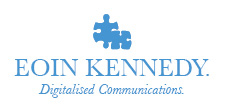Are comments the cheap semantic analysis?
Public relations or media campaigns have always been difficult to measure and the subject of much debate on what should be measured and how.
Most of the time the processes used have tended to be very crude. Some organisations just measure the size of the clipping and multiply by factors of 3 or 5, some try to adjust for the prominence of the company/organization and some tried to create a measure of desired message contained in a clipping.
Organisations such as Kantar and O’Leary Analytics also do a good job of using technology and manual intervention to give measures of the success of a campaign.
In general though many companies tended to reply on any publicity is good publicity approach and were only really concerned about how much it would have cost to buy the space if it were advertising and not the impact. The job was to influence the journalist and hopefully this would influence the public. Sometimes these audiences agree but not always and with pure reporting there tends to be little outside of the presentation of the facts, so how people interpret it varies wildly.
PR budgets are normally a pretty small spend in over all marketing costs so companies tended not to invest in market research to measure the impact of campaigns. Hence much was left to conjecture.
Now that media is well down the path of embracing aspects of web 2.0 and social media they have also accidentally generated some really nice feedback tools to get a nice snap shot of public mood.
Take the announcement today about the halving of sick pay for the public sector.
Previously radio show call-in’s would have been the most accessibly accurate measures of the mood of the land but looking at the comments and social media shares from the new and traditional media gives a real insight into how people feel about the announcement.
The Journal are really the masters here. This story got 3,415 views and 58 facebook shares but it’s the 51 comments where you really see how divided people are on the issue and the genuine anger on both sides.
The Irish Independent had less at 16 shares and the 7 comments were more pithy.
The Irish Times predictably got one long and well considered comment, 3 Facebook recommends, 8 tweets, 10 shares.
Interesting Newstalk has no comments and around 7 Facebook shares while RTE does not allow comments and only had 1 Facebook and 3 Tweets.
Newswhip also give a nice metric on the articles speed as it gets taken up by social platforms.
The debate also raged on Boards.ie where some of the media articles were posted and discussed or added to previous discussion on the same topic.
Along side this there is also the chatter and liking on Facebook profiles or replies or retweets through Twitter, some of which can be easily tracked.
Trending topics and the ever growing freely available social search tools also add to the arsenal.
In an era where semantic analysis is still in its early days these give PR practitioners and policy makers a quick and easy to digest snap shot of the impact of a piece of communications.
Getting the slickest procedure, working out how to interpret and reporting all this in a meaningful way is going to be difficult but in the day of instant reaction there must be great value in being able to react before the printed addition arrives and the phone call start coming in.
Those who get slick with these tools stand the best chance of becoming the crystal ball gazers.
(Addition)
The day after I wrote this I again checked the comments. Some big jumps as people signed in at home and added to the debate.







No comments